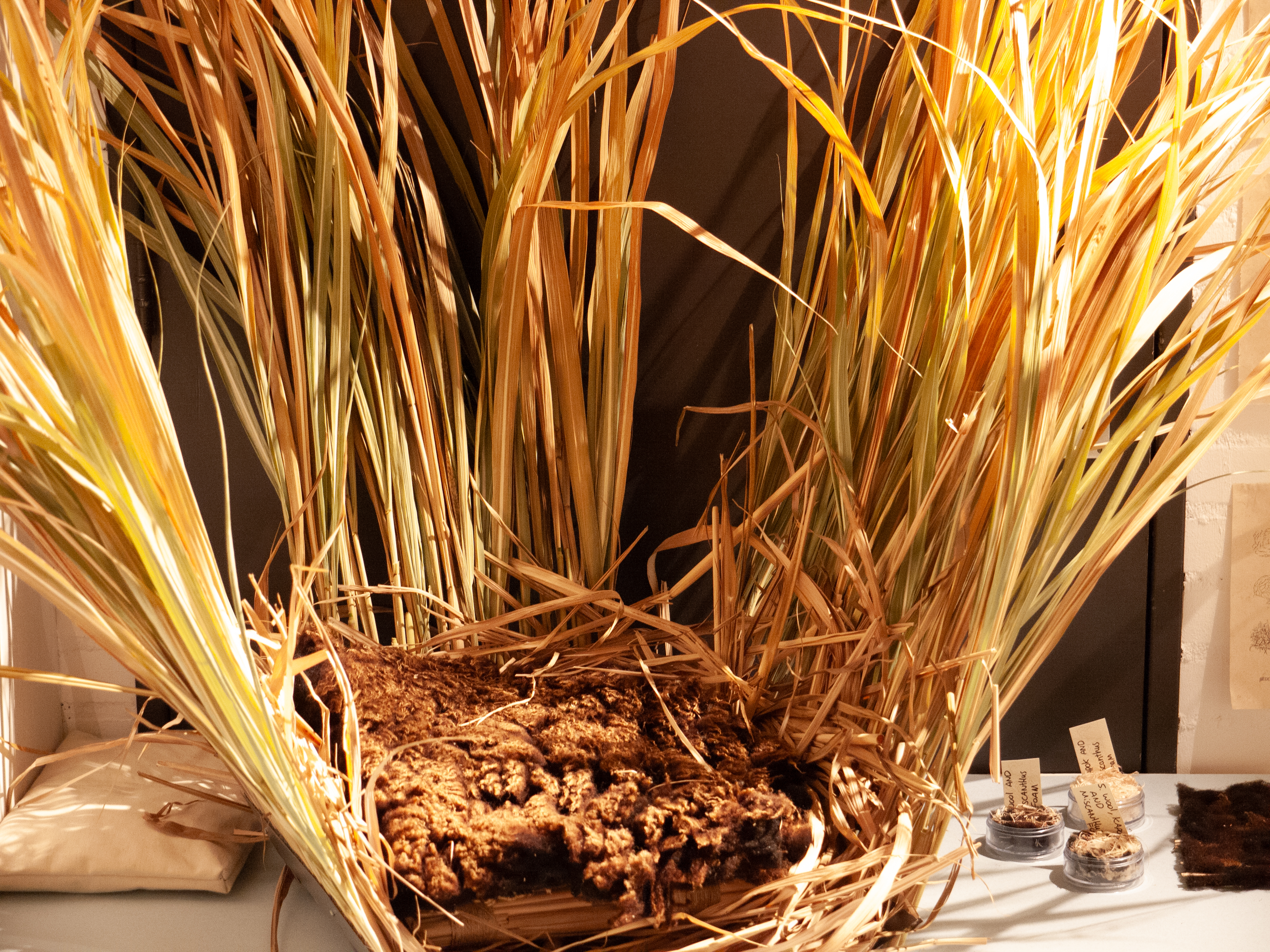A Second Life for Materials: The Trash Bunker at Willem de Kooning Academy
The Trash Bunker is a dynamic and evolving space managed by graphic design students Côme and Zosia. What began as a small project has grown into a vital resource for students, where sustainability meets creativity. The Trash Bunker is more than just a place to store discarded materials—it's an incubator for innovative design, resourcefulness, and community.
From Small Beginnings to Essential Resource
Côme, a graphic design student and long-time steward of the Trash Bunker, recalls its origins: "It started as a small, messy room in the corner, part of an elective organized then by the Spin Collective. There was no structure at first, but as it became more established,it became part of the living station (together with the living lab and the rooftop garden), with student employees managing it." Zosia, who joined later, adds, "Most of my projects involved the Trash Bunker even before I started working here. The materials I see bring me creativity—they shape the way I think about my designs."
The Trash Bunker has now become an integral part of the academy's culture, providing students with a unique way to source materials for their projects. It's a constantly shifting landscape, where no two days are the same. "We never know what we’ll find," says Zosia. "One day it could be old fashion magazines, the next it’s YSL pieces or a sports bag full of fine art markers. It’s always a surprise."
Sustainability Meets Creativity
At its core, the Trash Bunker is about sustainability, reimagining how to use discarded materials in a creative and practical way. "When I think about how to apply sustainability to education, I focus on what we can bring into the world that’s both relevant and useful," explains Côme. "Instead of buying new materials, we take what’s already in our hands and come up with ideas that fit those resources."
This approach often leads to unexpected results. Zosia recalls one project where the Trash Bunker played a pivotal role: "For a graduation project, someone needed large white plastic sheets. We had them stored for two years. If that person had bought them new, it would’ve cost thousands of euros." The Trash Bunker doesn’t just save money—it breathes new life into materials, giving them a second or even third purpose.
Community and Collaboration
What sets the Trash Bunker apart is the community that has formed around it. Côme and Zosia have worked hard to foster a sense of shared responsibility, encouraging students to see the value in reusing materials. They stay connected with fellow students through a whatsapp group chat called 'material rescue community', where anyone can ask if something is suitable for the Trash Bunker. "It’s amazing how things that seem like junk to one person can become treasure for someone else," Zosia says.
Their efforts go beyond the academy as well. The Trash Bunker has worked with external institutions like the Nieuwe Instituut and the Maritiem Museum, sourcing materials from local companies and organizations. "A company in Capelle aan den IJssel is likely to donate rolls of fabric they use for ink tests, and we’re looking to work with a paint company," says Côme. "The possibilities are endless, but time is limited—we only get paid for 16 hours a week together, and maintaining the station is time-consuming."
Challenges and Aspirations
Despite its growing success, the Trash Bunker faces challenges. Some students still treat it as a dumping ground, ignoring the potential value of the materials within. "We want to change that mindset," says Côme. "It’s not just a trash space—it’s a vital resource. There’s so much work that goes into it, and we hope it becomes more integrated into the school system."
To address these challenges, Côme and Zosia are working on improving the labeling system and educating students on how to treat the materials with care. They also collaborate with teachers to encourage more sustainable practices, such as not gluing materials together so they can be reused.
Looking ahead, the duo envisions a future where the Trash Bunker becomes a cornerstone of WdKA, fully integrated with other departments and external partners. "It’s my baby," Côme admits. "But I know it will keep growing and evolving, even after I leave. My dream is for it to work with the academy store, the city, and beyond."
The Future of the Trash Bunker
As graduation looms for both Côme and Zosia, the future of the Trash Bunker is on their minds. "We’re going to have to search for replacements," says Zosia. "We’ll put out an open call for candidates—someone as passionate as we are. It’s about finding the right balance. We work as much with people as with materials, so it’s important to keep that community spirit alive."
As they prepare to pass the torch, Côme and Zosia are optimistic about the future. "I believe the Trash Bunker will be in good hands," Côme says with a smile. "It’s going to keep growing, and I can’t wait to see where it goes next."
For now, they encourage students to engage with the Trash Bunker—whether by donating materials, joining the community, or simply respecting the space. "Follow us on Instagram, read the signs, communicate with us," Zosia urges. "There are real people behind the station, and we’re here to help you be as creative and sustainable as possible."


